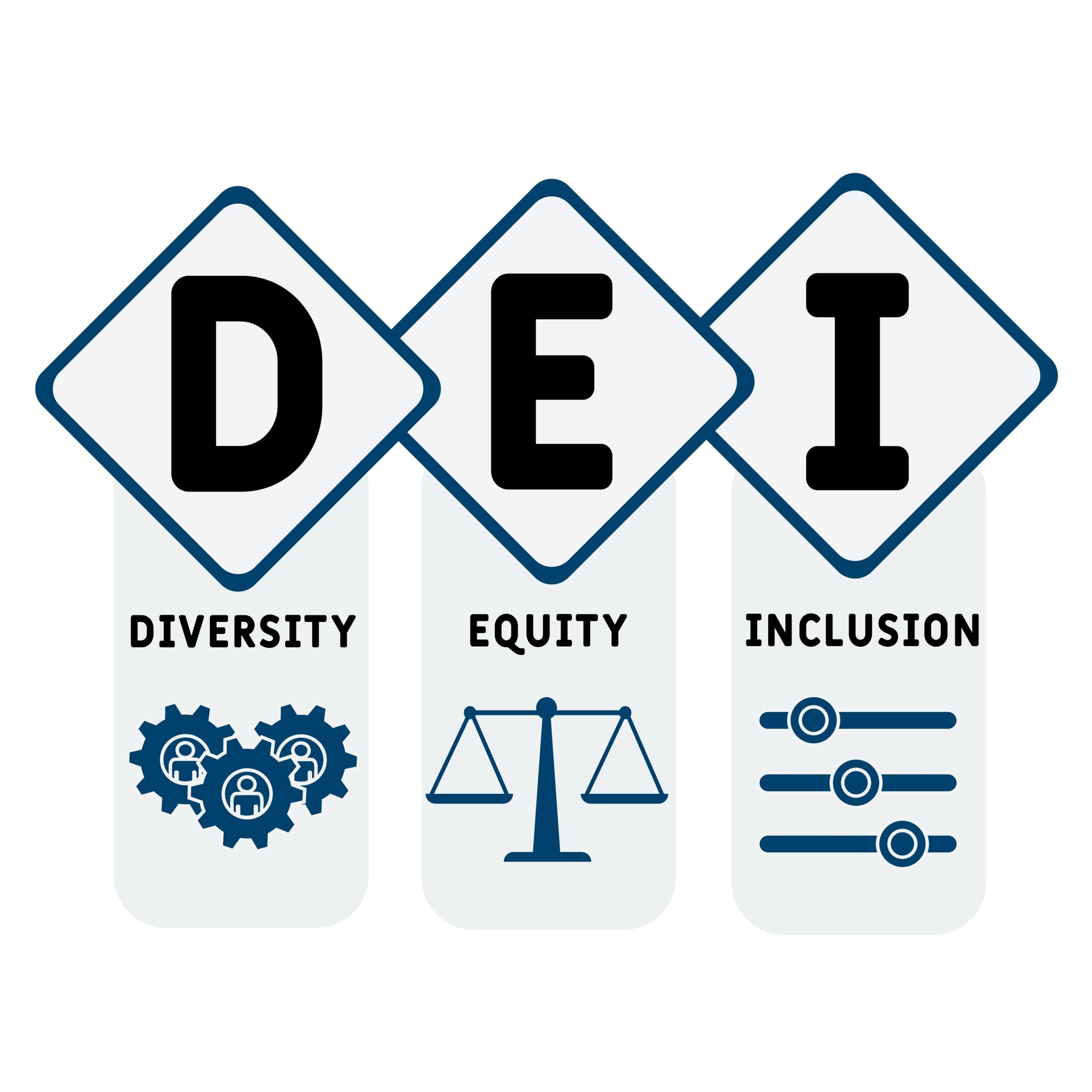
Diversity, Equity, and Inclusion
Back to Blog

July 22, 2022
DEI training is an important part of creating an inclusive workplace. But what exactly is DEI training? DEI training consists of a set of principles and practices that help employers and employees take practical steps to create a fair and effective work environment in three core areas: diversity, equity, and inclusion.
Diversity, equity, and inclusion (DEI) is vital to creating and maintaining a harmonious workplace. It’s important for employers to provide a space where all employees can thrive, both personally and professionally. For this reason, it’s important to understand each concept individually and collectively.
Diversity refers to the makeup of a workplace. This can include things like protected classes (including gender, race, age, and sexual orientation), or other traits like communication style, height, and weight. Diversity training is an effective way to promote better teamwork and create a more inclusive work environment.
Inclusion refers to how an organization fosters participation and involvement with its employees. Fostering inclusion in the workplace means employers (and employees) actively ensure that people feel a sense of belonging. Inclusion is an important part of company culture because it enables employees to be their most authentic selves and can be achieved through dedicated inclusion training.
Equity refers to eliminating systemic barriers so employees, regardless of identity, can fairly access opportunities. It is the process of ensuring that processes and programs are impartial, fair, and provide equal possible outcomes for every individual. Employers that encourage workplace equity are committed to providing every member of their organization with equal access to professional resources and opportunities.
Put simply, there’s a business case for DEI training. And no, we don’t just mean protecting yourself from lengthy, expensive lawsuits that can ruin your organization’s reputation. DEI training has actually been found to increase the strength and effectiveness of a workplace. In short, DEI training just makes sense.
Organizations that foster diverse, equitable, and inclusive environments have been found to be stronger with reduced employee turnover. On the flip side, it’s been found that organizations that do not prioritize diversity, equity, and inclusion tend to suffer from brand sabotage more!
DEI training can help your team learn how to communicate more effectively through specific microaggression modules. Microaggressions are subtle, often unintentional, actions and statements that can come across as prejudiced or even plain hostile towards others on our teams.
It’s pretty hard to effectively communicate if our words and actions are unintentionally causing harm or offense. Learning what these are, where they come from, and how to combat them is important for creating a team that not only welcomes but embraces diversity and inclusion. And most importantly, learning about microaggressions can help us learn to communicate better in the workplace.
Education is an important step toward change. That’s why the most effective and sustainable DEI training includes specific unconscious bias training. This type of training teaches employees the different types of unconscious bias and can help employees recognize and understand when that bias is happening — giving them the chance to combat it in their own and others’ actions.
Types of unconscious bias can include:
Traliant’s DEI training program goes beyond just telling participants what unconscious biases are. It focuses on education as well as practical and sustainable steps that teams can take to make a more inclusive work environment.
It’s important to commit to legally compliant unconscious bias training so your team can understand that not only are these types of biases unethical — but they can also be illegal. It’s also important to teach that everyone can be both a victim and a perpetrator of bias—it’s important to remember unconscious biases are biases that we are not aware of.
DEI training that includes bystander intervention modules can help your organization empower your employees. Bystander Intervention has been found to be one of the most effective and practical steps toward building a diverse, equitable, and inclusive work environment. Starting with bystanders who can interrupt bias and harassment when they see it occurring is one of the quickest ways to combat threats to your diverse, inclusive, and equitable workplace.
It’s crucial to make sure your team is getting proper, legally compliant, and comprehensive DEI training. While DEI training is important, any old program won’t do.
Comprehensive DEI training will help your team understand unconscious biases, how to avoid and respond to microaggressions, and how unwanted harassment in the workplace can be prevented with bystander intervention. Beyond employees, it’s essential for your management team to understand how these different factors can affect recruiting and hiring, assignments, performance assessments, and promotions, too.
When setting out on a DEI initiative, it’s important to understand what specifics are required of your organization. For example, some municipalities, like the City of Chicago, require that employees receive a certain amount of bystander intervention training as a part of wider DEI initiatives. Traliant’s unique approach to DEI training integrates legal compliance and our full program will fill these requirements with its included one hour of bystander intervention training.
Traliant offers comprehensive DEI training courses designed and led by employment lawyers and university professors who focus their research on DEI issues. If you’re unsure about requirements in your specific area or are ready to commit to DEI training for your employees, contact us today.
Our team of legal experts can help consult with your team and find a DEI training program that works for you.
Share
By
Elissa Rossi